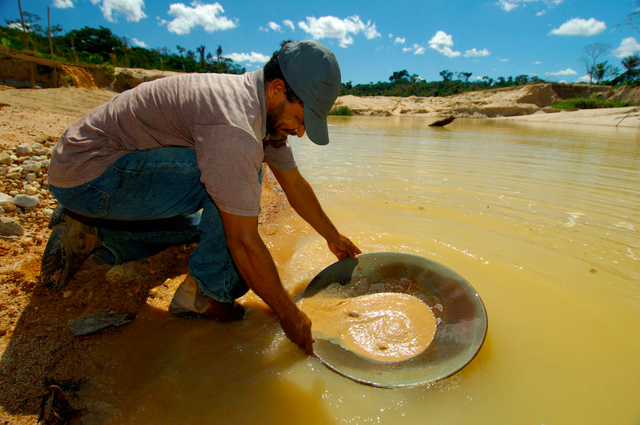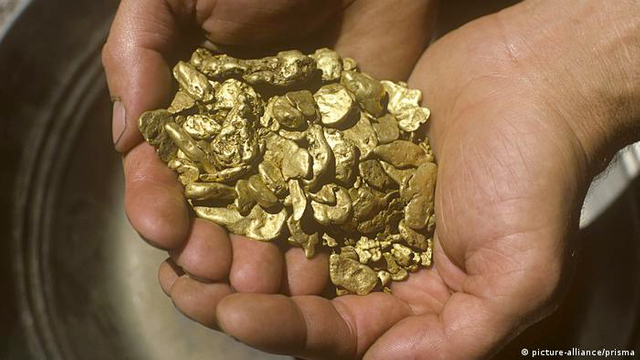The extraction of gold resources by mining is known as gold mining. Historically, gold was extracted from alluvial deposits using manual separation methods such as gold panning. However, the expansion of gold mining to non-surface ores has resulted in more complex extraction processes such as pit mining and gold cyanidation. The majority of mining in the twentieth and twenty-first centuries was done by large corporations, but the value of gold has led to millions of small, artisanal miners in many parts of the Global South.
Human rights and environmental issues are common in the gold mining industry, as they are in all mining. Health and safety risks are much higher in smaller mines with less regulation.
The mining of the Hungarian deposit (present-day Slovakia), primarily around Kremnica, was the most extensive in Europe during the Medieval period.
Numerous gold rushes in remote regions around the world caused large migrations of miners during the nineteenth century, including the California Gold Rush of 1849, the Victorian Gold Rush, and the Klondike Gold Rush. The discovery of gold in the Witwatersrand resulted in the Second Boer War and, eventually, the establishment of South Africa.

The Carlin Trend was discovered in Nevada, United States, in 1961. According to official estimates, total world gold production since the dawn of civilization has been around 6,352,216,000 troy ounces (197,576.0 t), with Nevada accounting for 1.1 percent of that total, ranking Nevada as one of the Earth's primary gold producers.
#geekpranee #krsuccess #photography #gold #goldmining #nature #world
